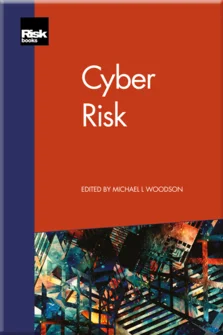Introduction: The Next Frontier of Risk Management: Cyber Risk
Introduction: The Next Frontier of Risk Management: Cyber Risk
A Proposed Business-Oriented Approach to Cyber
A Practical Approach to Developing a Cybersecurity Programme
Regulations, Compliance and Cyber Risk Management
The Role of Cyber Risk in the Organisation
The Evolution of the Cyber Risk Role within the Three Lines of Defence
Quantifying Cyber Risk
Leadership and Culture: The Foundations of Cyber-Risk Management
Understanding the Cyber Risk Landscape: An Integrated Framework
The Transformation of Information Security: New Threats and Vulnerabilities
Cybersecurity Metrics: The Good, the Bad and the Ugly
Third-Party Risk Management
Cybersecurity’s Neighbourhood Watch: The Strength of Information Sharing
Cyber Risks in Business Continuity Management and Supply Chain Resilience for Financial Institutions
Cybersecurity Threats to the Critical Infrastructure
The True Meaning of Cyber Incident Response
Cyber Risk: Where We Have Been, Where We Are and Where We Are Going
The emergence of technologies such as cloud computing, mobility, big data, social media and the Internet of Things (IoT) has led to the transformation of the workplace and the way society communicates. The increased dependency on technological advancements such as mobile banking, electronic payments and data sharing has led to an increase in interconnectivity, globalisation and the ‘commercialisation’ of cyber-crime activities, which in turn has led to the increased frequency and severity of cyber incidents, including high impact data breaches at several of the largest financial institutions around the world.
This transformation, like others of years past – when networking individual computers were connected together in academic, and in government environments based on the concept of being ‘wide open’ for academia; where the goal was to share information openly; where security controls were limited to accounting functions in order to charge money for use of computer time; and in government whose main goal was to block access to computers, restrict access to confidential data and prevent the interception of data – has led to a dramatic paradigm change in the regimens that have
Copyright Infopro Digital Limited. All rights reserved.
As outlined in our terms and conditions, https://www.infopro-digital.com/terms-and-conditions/subscriptions/ (point 2.4), printing is limited to a single copy.
If you would like to purchase additional rights please email info@risk.net
Copyright Infopro Digital Limited. All rights reserved.
You may share this content using our article tools. As outlined in our terms and conditions, https://www.infopro-digital.com/terms-and-conditions/subscriptions/ (clause 2.4), an Authorised User may only make one copy of the materials for their own personal use. You must also comply with the restrictions in clause 2.5.
If you would like to purchase additional rights please email info@risk.net











